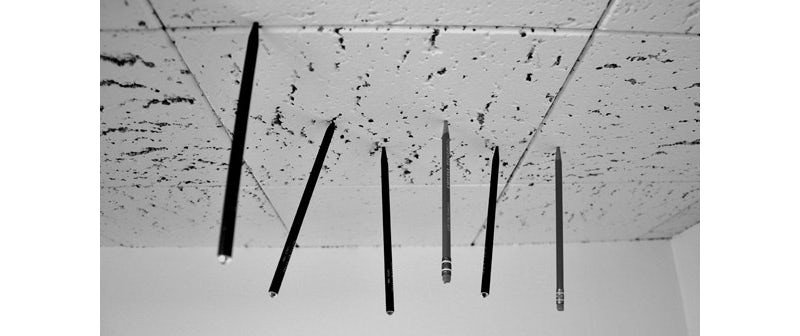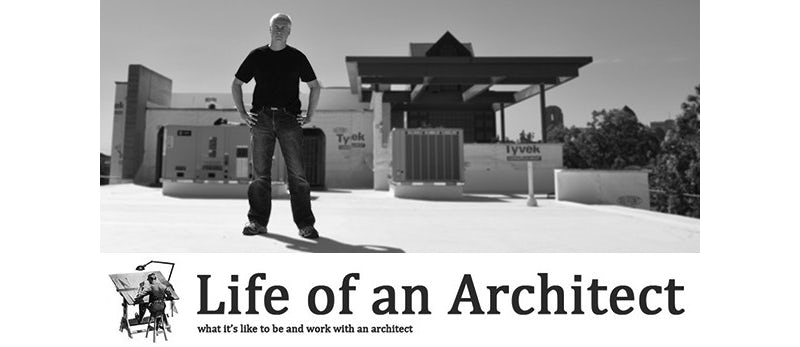Bob Borson is creator of the famous Life of an Architect blog, a Texas-based architect at Malone Maxwell Borson Architects and an indispensable guide to professional practice. We are pleased to present a selection of his posts on Architizer, each one providing amazing insight into the complex process that goes into all great architecture.
People frequently ask, “Where does the inspiration come from during your creative process?” … enough so that I thought I would try to answer that question in the form of a post. When I’m staring at a blank piece of paper, how do I start? Where do I get my inspiration?
To answer a question about creativity, I think most people need to take a step back and think about their creative process. Most people tend to focus on the “creative” part of the equation when they really should be focusing on the “process” part. It is a process — it takes time, and despite the fact that legendary Finnish architect Alvar Aalto said “You can’t chew pencils and spit ideas,” being creative is work and you shouldn’t expect to sit down and be struck with genius … at least not all the time.
I tend to break my own creative process into three different and distinct categories:
Distractionnoun di-ˈstrak-shən : something that makes it difficult to think or pay attention : something that amuses or entertains you so that you do not think about problems, work, etc.
Inspirationnoun in(t)-spə-ˈrā-shən : something that makes someone want to do something or that gives someone an idea about what to do or create : a force or influence that inspires someone
Creationnoun krē-ˈā-shən : the act of making or producing something that did not exist before : the act of creating something
Pretty straightforward, but I don’t really know which one to use when the ideas aren’t flowing … so let’s start with the easiest one, “Distraction.”

Throwing pencils into the ceiling is about as juvenile as distractions come, but it seems to work for me. I’ll never have that big of a pencil collection stabbed into the ceiling because I like my pencils too much … I eventually go and retrieve them before too long.

This is Cubebot, and it is one of the few toys I have around my work space. Cubebot came into existence when I bought him for an office gift exchange, and I recommended to one of my office mates that he should select my present — thinking he would like it. Despite his initial trepidation, he took the gift and Cubebot immediately came to live up at the office. Eventually I had to buy my own Cubebot because my friend HATED when he would come into the office and find that “someone” had messed with HIS Cubebot. The bottom-right-hand picture is what I found one day when I came into the office [sad face]. Someone was tired of my antics.
It was a great distraction while it lasted. Next, let’s move on to “Inspiration.”

Seeing something that you like, and then taking the time to understand why you like it, is a very rewarding process that frequently affects the way you ultimately see a thing. There is no shortage of books and magazines in my office — and I am deluged with new design magazines and trade periodicals daily. While the information is sometimes outdated by the time I see it, the process of critically looking at what other designers are doing is very inspirational.
Finally there is “Creation.”

There is a story behind why I started Life of an Architect — and it is summarized by saying I needed a creative diversion. In the beginning — back in early 2010 — things were somewhat slow at the office and I needed a creative outlet … and Life of an Architect was born. I am constantly amazed by the amount of effort required to maintain this site. Just coming up with the topics is a challenge in and of itself, but the real challenge is how I have had to learn a million new things in order to fill out some idea of concept for an article and then execute it in a way that reflects the point I am trying to convey and still maintains some “Bob personality” along with it. Maybe it doesn’t sound hard, but it is — at least it’s hard for me.
At the time of writing, this site had existed a total of 1,396 days — that’s almost four years — and I have written 551 articles, prepared 4,359 images and graphics and made three terrible videos [as of January 2017, the site is now seven years old, with many more articles]. They aren’t all winners, but I had to start with a blank screen when I created each one. This sometimes involved research, teaching myself new skills … and most importantly, it forced me to evaluate why I think about something the way I do so I could try to explain my position/reasoning to others. At times it feels like the worst kind of homework (the “voluntary” kind), but even four years later, it still fills a creative void. On Life of an Architect, I can do whatever I decide to do; I can explore my own interests and I can chase any rabbit I want down the rabbit hole.
The very definition of creativity is the act of making or producing something that did not exist before — I can’t think of an example easier to point at than my site. If you ever wanted a reason why you should start your own website — for professional or personal reasons — if you’re an architect, there only needs to be one reason: creativity.
So that’s a look at my own creative process — or at least how I jump-start my creative process. Sometimes it means not doing anything, while at other times, it means that the act of constantly trying to be creative actually helps me when I need to be creative.
Cheers,
Bob
Enjoy this article? Check out more of our Young Architect Guides:
The 7 Secrets to Happy Interning
7 Tips for Getting Hired After Graduation
Building Great Architecture Models
5 Lies Told About the Profession You Must Ignore
How to Convince Your Audience With a Powerful Project Narrative
How to Write About Architecture
5 Specifying Tips for First-Time Architects




